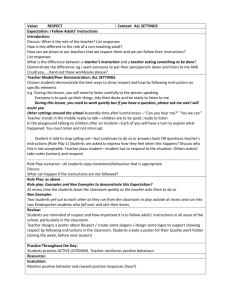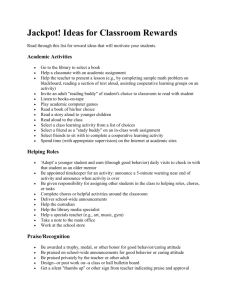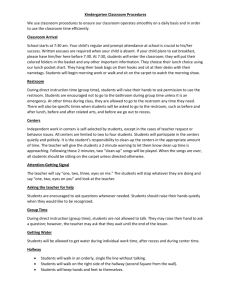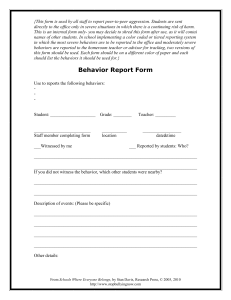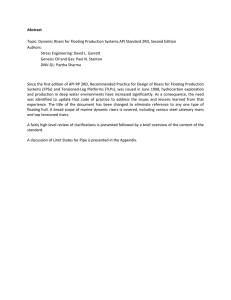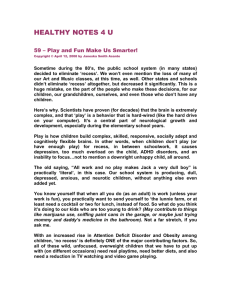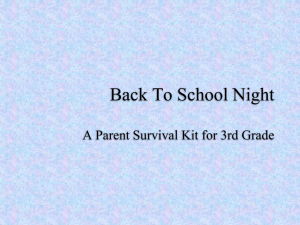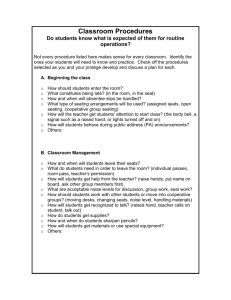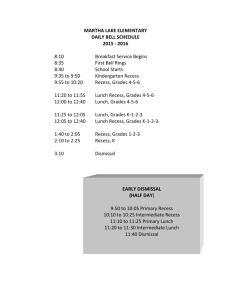Classroom Management In a Music Room: - classroom
advertisement
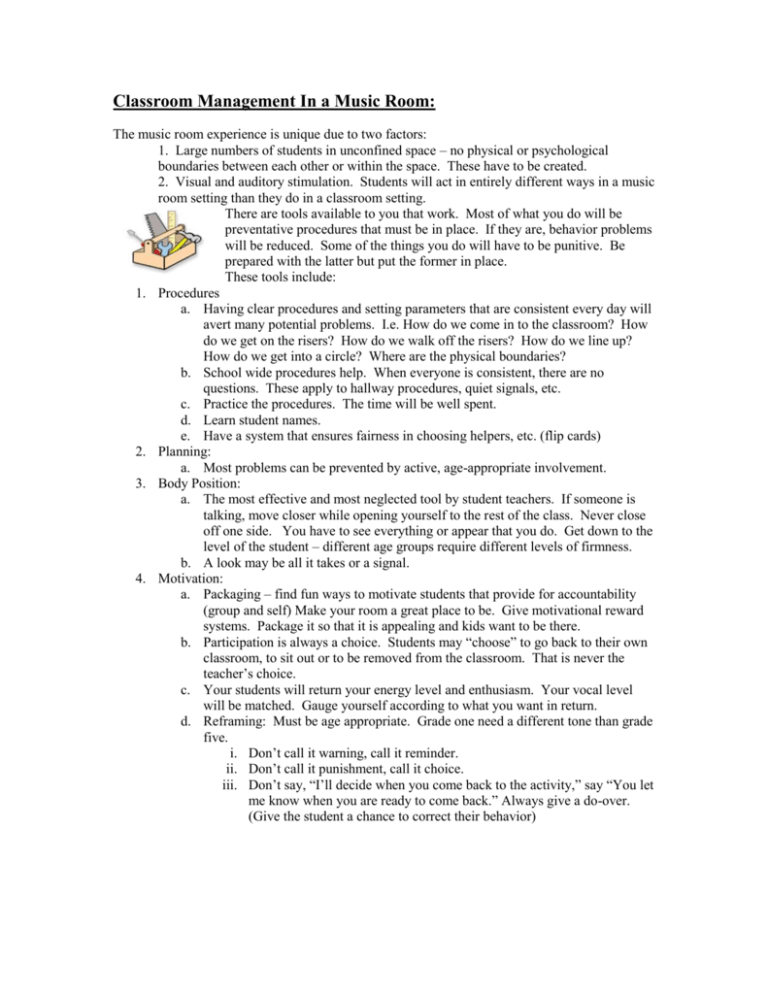
Classroom Management In a Music Room: The music room experience is unique due to two factors: 1. Large numbers of students in unconfined space – no physical or psychological boundaries between each other or within the space. These have to be created. 2. Visual and auditory stimulation. Students will act in entirely different ways in a music room setting than they do in a classroom setting. There are tools available to you that work. Most of what you do will be preventative procedures that must be in place. If they are, behavior problems will be reduced. Some of the things you do will have to be punitive. Be prepared with the latter but put the former in place. These tools include: 1. Procedures a. Having clear procedures and setting parameters that are consistent every day will avert many potential problems. I.e. How do we come in to the classroom? How do we get on the risers? How do we walk off the risers? How do we line up? How do we get into a circle? Where are the physical boundaries? b. School wide procedures help. When everyone is consistent, there are no questions. These apply to hallway procedures, quiet signals, etc. c. Practice the procedures. The time will be well spent. d. Learn student names. e. Have a system that ensures fairness in choosing helpers, etc. (flip cards) 2. Planning: a. Most problems can be prevented by active, age-appropriate involvement. 3. Body Position: a. The most effective and most neglected tool by student teachers. If someone is talking, move closer while opening yourself to the rest of the class. Never close off one side. You have to see everything or appear that you do. Get down to the level of the student – different age groups require different levels of firmness. b. A look may be all it takes or a signal. 4. Motivation: a. Packaging – find fun ways to motivate students that provide for accountability (group and self) Make your room a great place to be. Give motivational reward systems. Package it so that it is appealing and kids want to be there. b. Participation is always a choice. Students may “choose” to go back to their own classroom, to sit out or to be removed from the classroom. That is never the teacher’s choice. c. Your students will return your energy level and enthusiasm. Your vocal level will be matched. Gauge yourself according to what you want in return. d. Reframing: Must be age appropriate. Grade one need a different tone than grade five. i. Don’t call it warning, call it reminder. ii. Don’t call it punishment, call it choice. iii. Don’t say, “I’ll decide when you come back to the activity,” say “You let me know when you are ready to come back.” Always give a do-over. (Give the student a chance to correct their behavior) When things are difficult, be firm but fair: 1. Contracts – the student sets out the behavior that they are willing to do to be in class. This may include the teacher behavior in terms of how many reminders they are allowed before the consequence is metered. Consequences are set in the contract. Stop and start contracts work well. The contract is signed and dated by the student and the teacher. 2. Choices – I’m sorry that you chose to sit on the risers today. With my older students I put them in charge. “You are in charge of recess. If you take my class time for recess activities, you choose to give your recess for class time activities.” Suggestions: 1. State the behavior: “You’re talking.” Or “someone is talking over here” – that will often stop the behavior. 2. State your feelings: “That’s bothering me.” 3. State your expectation /what do you want the child to do? “Stop that.” “I asked you to sit on the floor.” 4. Talk less. The less attention you give to negative behavior, the better. Ask the child to sit out and then speak with them after class when they are not wasting time. 5. Last of all, warn about potential consequence and then follow through: “Next reminder, I’ll have to ask for 5 minutes of recess.” Some catch phrases that work: 1. “We’re not doing that today.” 2. “You choose or I’ll choose.” (and you probably won’t like it.) 3. “You decide or I’ll decide.” 4. “Concert style” 5. “Hands in the front or hands in the back.” 6. “Don’t forget.” Or “Did you forget?” 7. “Show me.” 8. “I like the way so and so is …” 9. “So and so is ready.” 10. “1 - your sitting up tall, 2 – you’re eyes are on me, 3 – your hands are on your lap, 4 – your mouth is closed.” 11. “Last reminder.” 12. “Do you know what you did? ….Can you fix that?” 13. “Fix that!” 14. “Did you think I meant that?” Don’t put up with silliness or nonsense. You are there to teach not baby-sit. At all times, you must be in charge. This gives children a sense of security – even if they are wrong. If you don’t allow a child to hurt another, it says to that child that no one else will be allowed to hurt them. That’s good stuff.

